Simple ways to reduce computer eye strain
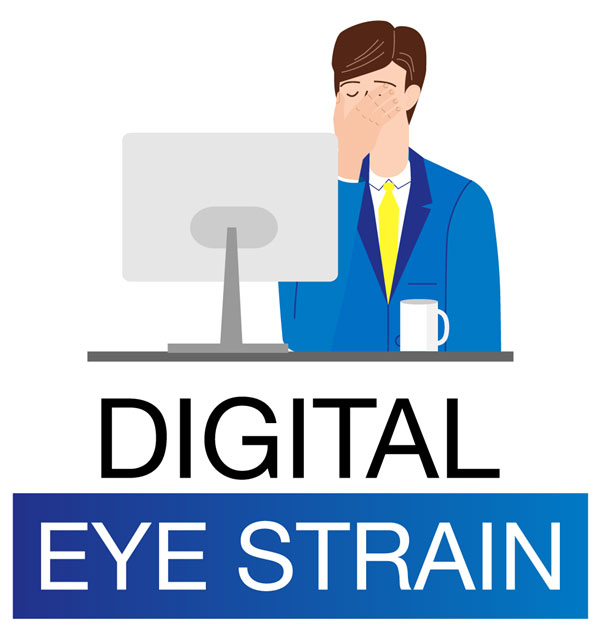
With most people staying close to home amid the coronavirus pandemic, we've put together a list of five easy ways to reduce digital eye strain caused from all that extra screen time.
Between scrolling through your social media feed (thanks for reading!), bingeing a Netflix or amazon series and courageously battling through a Fortnite marathon, your eyes are taking in a lot of blue light, and that can harm your vision.
Blue light exposure can be lessened, and the easiest way is to reduce your screen time to ease your symptoms of digital eye strain.
What is digital eye strain?
Digital eye strain from all that time staring at screens can cause headaches, blurred vision, poor sleep and watery, tired or dry eyes. While the symptoms of digital eye strain are often temporary, too much screen time also has been shown to intensify and accelerate pre-existing eye conditions.
What is blue light ?
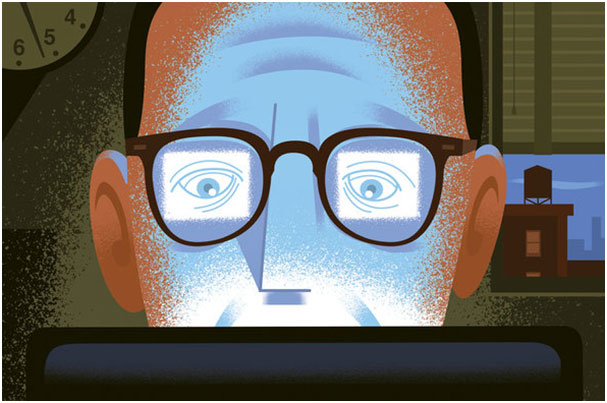
When you're looking at computer screens and other digital devices that emit blue light, this unfocused visual "noise" reduces contrast and can contribute to digital eye strain. Blue light is also very important in regulating the body's natural sleep/awake cycle. Too much blue light late at night can disrupt this cycle, potentially reducing sleep quality and causing daytime fatigue.
We know we are spending more hours in front of the computer these days. Here are a few ways to help reduce digital eye strain...
1. Give your screen and your eyes a break
It can feel unnecessary to take breaks from that new web series you’re hooked on, especially when there isn’t much else to do at home. However, applying the “20-20-20” rule to your streaming regimen can keep symptoms of digital eye strain at bay.
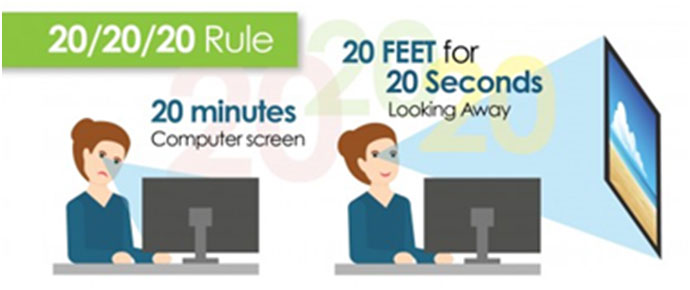
For every 20 minutes of screen exposure, pause and stare at an object 20 feet away for 20 seconds.
On top of these little pauses, take longer breaks from your screen. Every hour or so, get up and stretch your legs.
If you really want to treat yourself, go outside. Do some work in your yard or take your pets for a walk — get some fresh air in your lungs and remind yourself that planet Earth is still intact. Your laptop, smartphone and TV will still be there when you return.
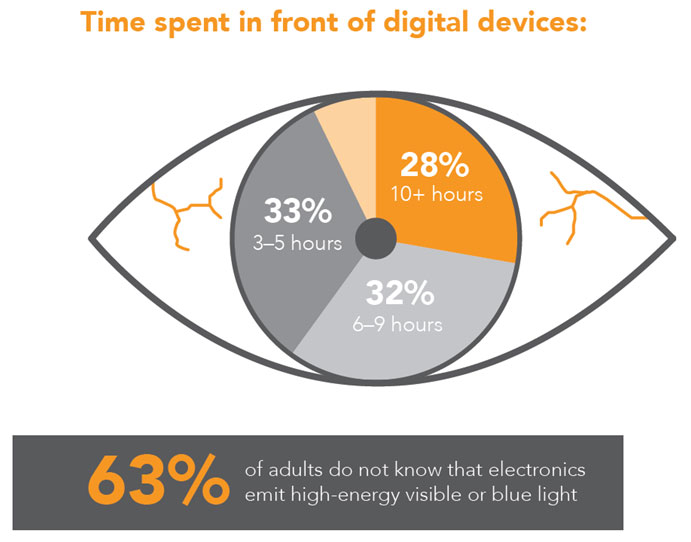
2. Blink more often
When cooped up at home, it’s tempting to become a “screen zombie.” How to slay this zombie? Blink!
According to researchers, you typically blink 15-20 times per minute. While you’re staring at the little glowing rectangle in your hand, you’re only blinking 5-7 times per minute. Of course your eyes are dry!
Blinking is how your eyes stay moist and wash out irritating debris, so whenever you’re playing a video game or watching TV, remember to blink. Your eyes will only be closed for a tenth of a second, so we promise you won’t miss anything!
3. Adjust your screen display settings
Many smartphones, tablets and computers allow you to adjust the display settings to make screen viewing easier on your eyes.
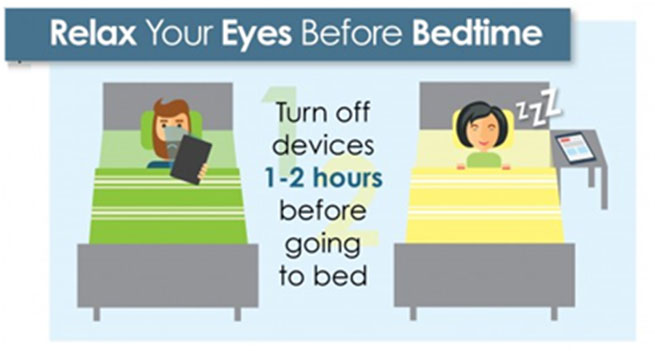
A good rule of thumb: Keep your screen at the same brightness as your work environment. Displays that are too dark or too bright can create a glare on your screen that may strain your eyes.
Another way to reduce digital eye strain is to increase the type size on your screen. Making the print larger can make the text is easier to read. No more squinting and straining to read!
Reading glasses made for computers are another great option to magnify small, hard-to-read text on your phone or computer screen.
Some smartphones allow users to put their display on “dark mode,” which shows white letters on a dark background. The setting is said to be easier on eyes than the stark white background that phones typically have.

4. Buy glasses that block blue light
Blue light glasses, or computer glasses, are made with a coating that blocks harmful blue light that can damage your eyes and disrupt your regular sleep patterns.
You can buy blue light lenses with any prescription strength — or you can buy blue light glasses without a prescription.
5. Get a comprehensive eye exam
Regular eye exams are a good way to relief from digital eye strain symptoms and to check the overall health of your eyes. Screen time might not be the reason for your headaches or blurry vision. You may just need a new prescription for glasses or contacts.
EXPERIENCING DIGITAL EYE STRAIN ? Get expert advice. Visit Kenia Eye Hospital